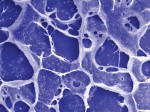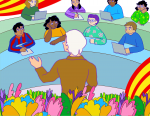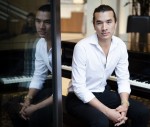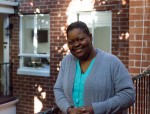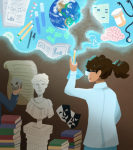UCLA researchers developed a gel-forming sprayable solution that can prevent cancer cells from regrowing after surgical removal.
Zhen Gu, a bioengineering professor, and other senior researchers at universities in the U.S. and China published their results earlier this month in Nature Nanotechnology, a scientific journal. The researchers tested the solution on mice with cancer and found that about 50 percent of the mice treated by the new method did not develop resurgent cancer cells after having their cancer surgically removed.
The new system is comprised of a gel-forming solution, the drug CD47 antibody and the nanoparticle carrier of the drug. Researchers have used each of the components individually in the past to treat cancer.
“But when you combine them all together, they become quite novel,” Gu said.
Gu said the most distinctive part of the delivery system was the use of the sprayer. Guojun Chen, a postdoctoral fellow and co-author of the paper, said Gu first thought to use a sprayer after observing a foam spray bottle commonly used during some Chinese festivals.
Qian Chen, postdoctoral fellow and first author, said they began using the current method of turning the solution to gel last year.
“We tried polymers at first before we switched to protein-based method,” she said. “The polymer is too thick for the spray.”
After a cancer is surgically removed, the solution is sprayed directly onto the surgical site and forms a gel layer to cover the wounds, promoting healing while releasing the CD47 antibody. The solution suppresses any recurring cancer cells at the surgical site. The immune cells at the surgical site are trained to identify cancer cells and can then spread to target cancers in other regions of the body.
The sprayer uses two containers, both with a base which creates the same pH level as the human body. One container carries enzymes that facilitate gel formation while the other container holds nanoparticle carriers of the drug.
Gu said droplets from a sprayer are more homogeneous, giving the researchers better control of drug delivery compared to the traditional delivery method of a premixed syringe.
The nanoparticle carrier calcium carbonate, which is a natural component of human bones, dissolves at and neutralizes the slightly acidic surgical site. The carrier also releases the CD47 antibody in the process. The nanoparticle itself also promotes the activity of macrophages that devour foreign objects in the body as a part of the immune response.
The anti-CD47 antibody inhibits the “don’t eat me”signal released by the CD47 protein of cancer cells to allow the body’s immune system to successfully identify and attack cancer cells.
As some normal body cells also use the CD47 protein to identify themselves to the immune system, the traditional method of delivering the CD47 antibody by injection can cause the immune system to attack various body cells, leading to side effects such as severe tiredness.
The localized nature of the new spray droplets delivery system would minimize such side effects. The system also trains T cells, a type of cell of the immune system that discriminates foreign bodies from human body cells, to recognize signatures of the cancerous cell at the surgical site. The T cells would then diffuse throughout the body to holistically target cancer cells in other areas.
The researchers confirmed the effectiveness of this holistic treatment by observing mice with cancers at two different sites on the body and surgically removing the cancer in one of the sites. They applied the spray on the surgical site while keeping the other cancer untreated. Results showed that the untreated cancer was also inhibited by the trained T cells from the treated surgical site.
Furthermore, Gu said the new system provides great practical value because of the simplicity and versatility of the spray.
“The system could be a platform technology and we can use it to deliver other therapeutic drugs … such as bone regeneration and teeth refilling,” he said.
As the spray delivery system is proven to be functional in mice experiments, Gu plans to conduct studies on large mammals and eventually on human subjects before releasing the spray for clinical use.
